While most Americans associate the Christmas holiday with Santa Claus, the U.S. is not the only country in the world to use a non-religious entity as a figurehead for this time of the year. Many other places around the globe use good old St. Nicholas as a focal point of the celebration, particularly when it comes to the always appreciated giving of the gifts.
Here are just a few of the most popular and celebrated Santa Claus around the world that you can meet when traveling abroad during the most magical time of the year!
Father Christmas, England

English families delight in the annual trip to the Father Christmas grotto. This specially designed room — or hut — is appropriately decorated for the holiday season, providing a festive backdrop for children to visit Father Christmas in order to take unforgettable pictures among many other fun activities for the whole family. It’s also traditional for children to leave Father Christmas a minced pie and sherry in exchange for the gifts that they receive.
The Yule Lads, Iceland
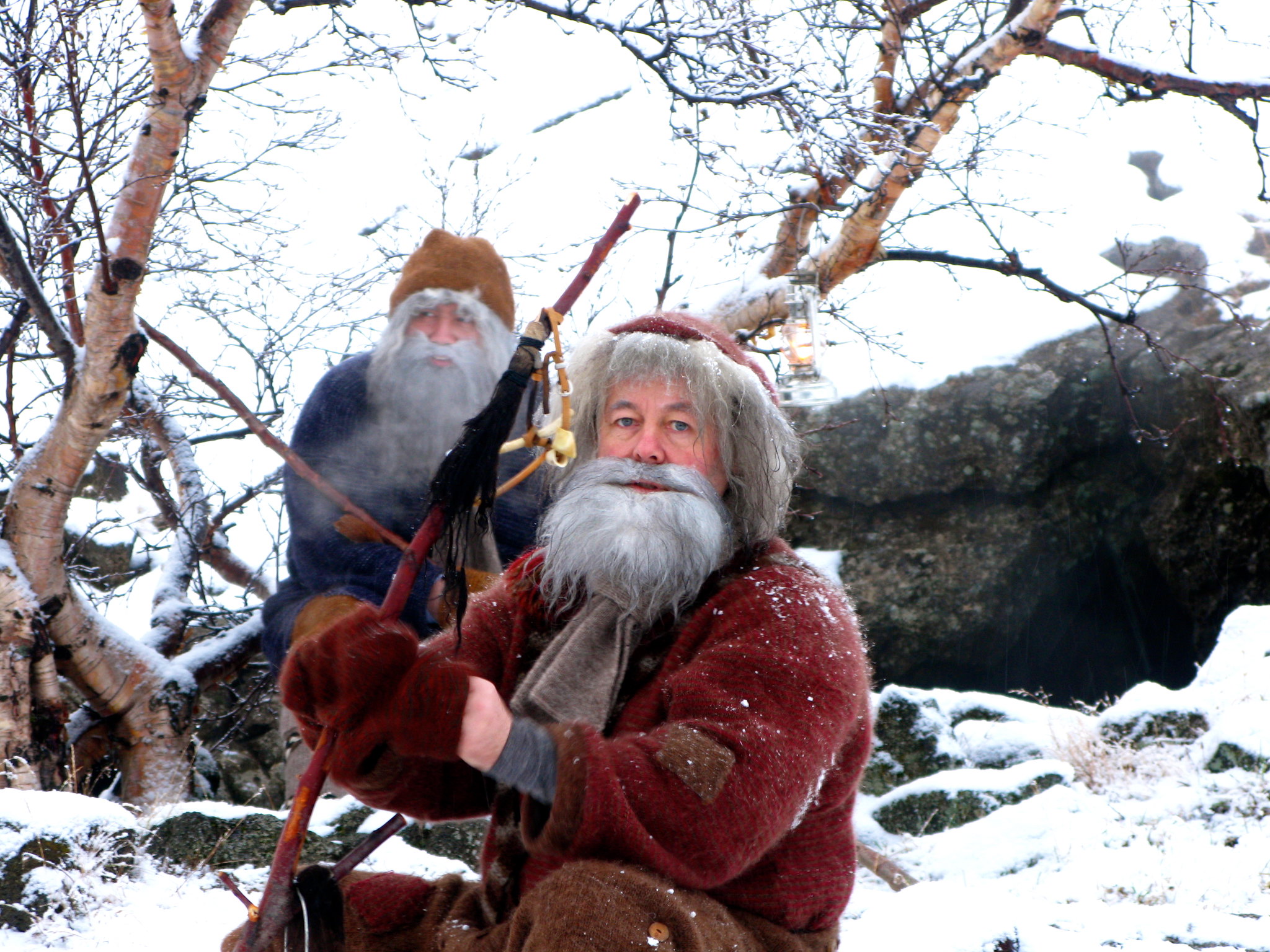
Yule Lads, Grjótagjá by eeems licensed under CC BY-NC-ND 2.0 DEED
In Iceland, Christmas takes on a mischievous twist, thanks to the thirteen Yule Lads, also known as “Jólasveinar.” These characters are part of Icelandic folklore and add an enchanting touch to the holiday season. Starting from December 12th, one by one, these jovial rascals visit Icelandic households until Christmas Eve, leaving small gifts or potatoes for well-behaved children in their shoes placed on windowsills. However, if you’ve been naughty, you might find a rotten potato instead!
These lads each have distinctive traits and behaviors, making their visits during the Christmas season a delight for Icelandic families and adding an extra layer of charm to the holiday festivities. For example, there’s “Sheep-Cote Clod (Stekkjastaur),” who harasses sheep but is known to be somewhat impaired as he has stiff peg legs. Another Lad, “Gully Gawk (Giljagaur),” hides in gullies and steals milk from cows. “Stubby (Stúfur)” is known for his short stature and penchant for stealing pans to scrape them for leftovers. “Spoon-Licker (Þvörusleikir)” loves licking spoons and is quite thin due to his spoon obsession. “Door Sniffer (Gáttaþefur)” uses his large nose to sniff out freshly baked bread.
Weihnachtsmann, Germany
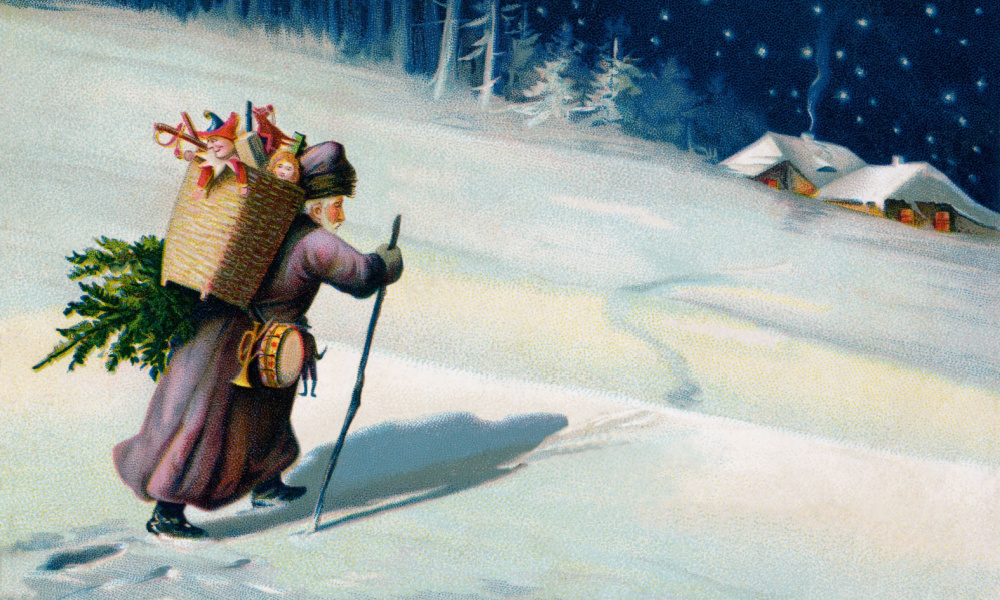
German holiday traditions stretch far beyond the iconic Christmas markets. If you’re spending the holidays in Germany, you will definitely hear the legend of Weihnachtsmann, the person who brings gifts to all of the children. Of course, it’s customary to open these gifts on Christmas Eve as families enjoy tons of festive food and drink. All German children know that they need to write letters to the Weihnachtsmann during the Advent season requesting their specific gifts.
Hoteiosho, Japan
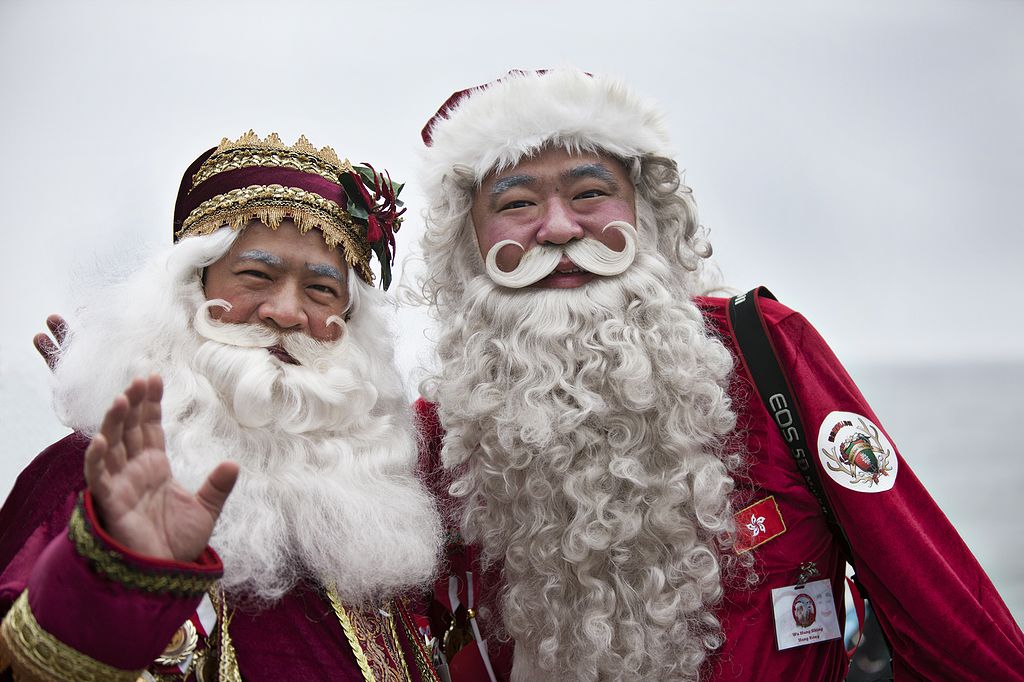
World Santa Claus Congress by Bakken/PR licensed under CC BY-ND 2.0
Although the Japanese don’t typically celebrate Christmas, that doesn’t stop them from enjoying a few Western holiday traditions! This Japanese version of Santa Claus is a Buddhist monk named Hoteiosho. Like the Americanized version of this Christmas classic, Hoteiosho is a jovial man with a large belly and a sack full of toys. One difference that distinguishes Hoteiosho is the presence of eyes on the back of his head. Why? Well, legend has it that this is how he sees if children are behaving properly! Hoteiosho is also known for being one of the seven gods of fortune in the Japanese culture, by the way.
You May Also Like: The Best Apps for Tech-Savvy Travelers
Kanakaloka, Hawaii
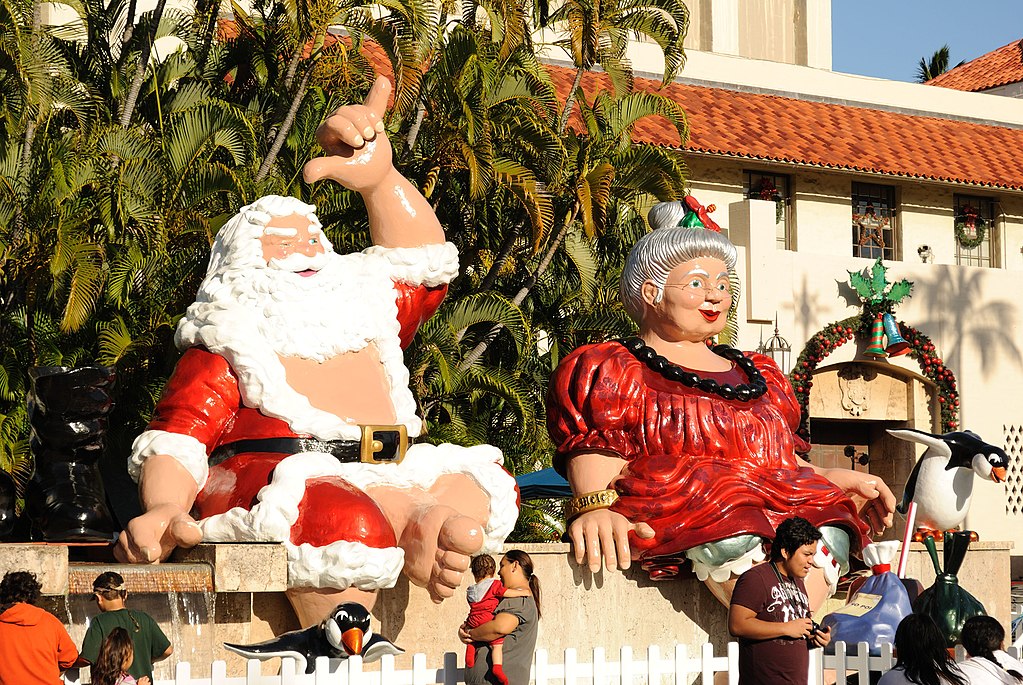
Santa Claus & Mrs. Claus by Daniel Ramirez licensed under CC BY-ND 2.0
Native Hawaiians enjoy the same Christmas traditions that most Americans participate in during this special time of the year! One slight difference though is that the Hawaiian version of Santa Claus has swapped the classic red suit and hat for a more authentic Hawaiian wardrobe, featuring a floral shirt paired with a lei. That alone sounds like an awesome excuse to head off to Hawaii for Christmas! This Hawaiian Santa is also known to flash the iconic “hang loose” sign when delivering presents and visiting with children.
Joulupukki, Finland
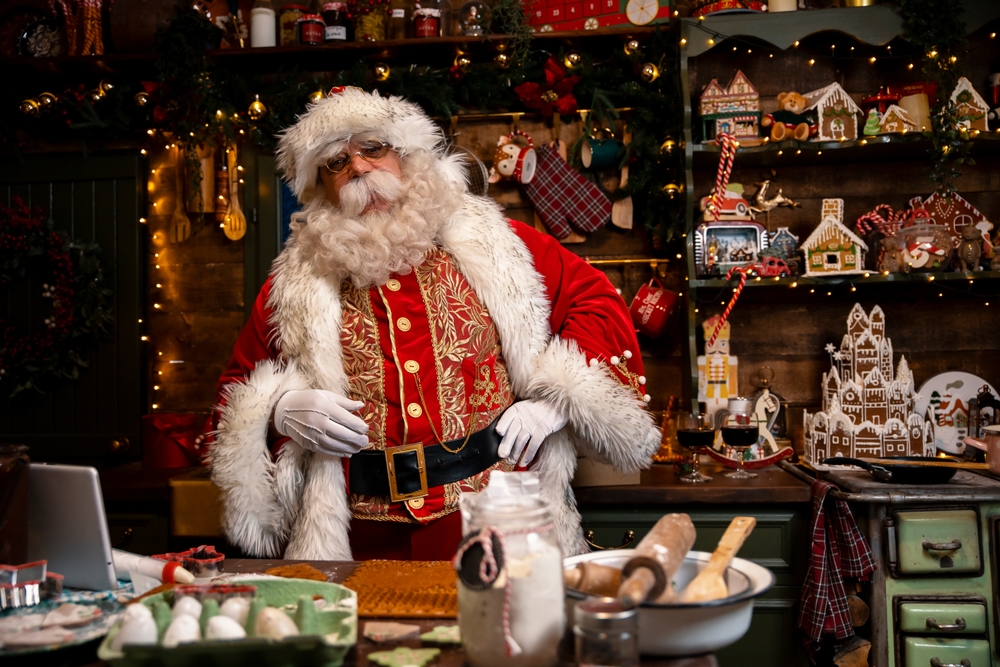
The word Joulupukki translates to “old goat,” explaining the Finnish tradition of a person dressed up as a goat performing for families in exchange for leftover food. The best place to immerse yourself in this peculiar tradition is to visit the Santa Claus Village located near the city of Rovaniemi. Here you will find the Joulupukki hard at work in his office with his elves making toys. Visitors will get to see the North Pole, Santa’s workshop, and more. The spirit of the holidays comes alive in this quintessential Christmas village that delights people of all ages!
Père Noël, France
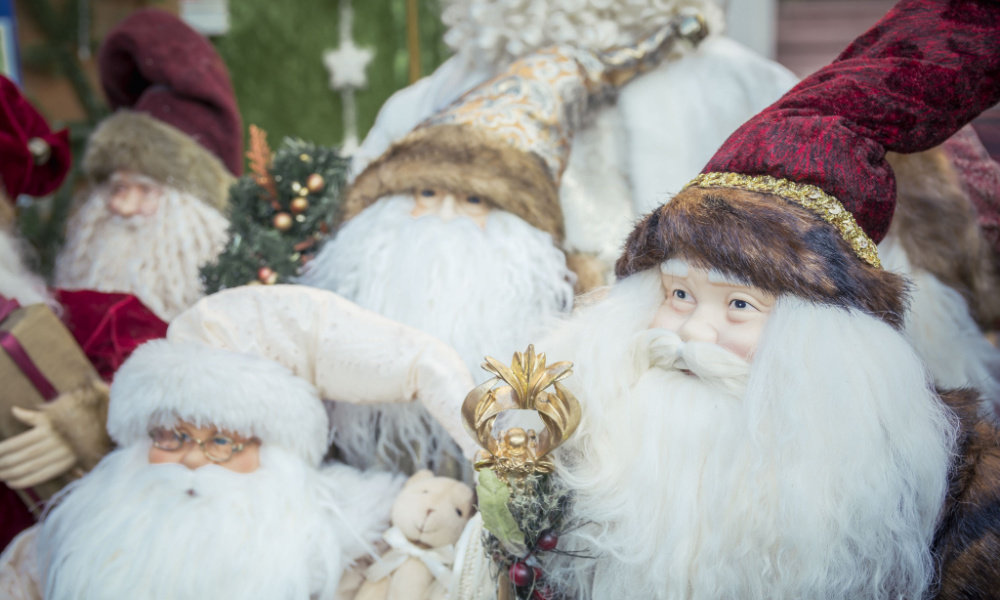 Père Noël is the magical being who brings gifts to the people of France. Tradition has it that this figure delivers the presents on the evening of December 24th or on Christmas morning, so keep that in mind if you intend to head to Paris or any other French city for your Christmas getaway abroad. The youngest children often refer to this jolly man as “Papa Noël,” or “Daddy Christmas.”
Père Noël is the magical being who brings gifts to the people of France. Tradition has it that this figure delivers the presents on the evening of December 24th or on Christmas morning, so keep that in mind if you intend to head to Paris or any other French city for your Christmas getaway abroad. The youngest children often refer to this jolly man as “Papa Noël,” or “Daddy Christmas.”
In lieu of stockings, French children leave their shoes near the fireplace for Père Noël to fill. In a dark twist, some parts of eastern France also see a visit from Le Père Fouettard, a nasty figure who — allegedly, of course — punishes children who do not behave!
FAQs:
Q: How can I contact or visit these different Santa Claus figures around the world during the Christmas season?
A: To visit these Santa Claus figures around the world during Christmas, you can typically find them in designated locations like Christmas grottoes in England, Christmas markets in Germany, and specific cultural events or locations in other countries. Research local holiday events and traditions to plan your visit.
Q: What are some unique traditions associated with these Santa Claus figures?
A: Each Santa Claus figure has its unique traditions. For example, in England, children leave Father Christmas a minced pie and sherry. In Finland, Joulupukki translates to “old goat” and involves a person dressed as a goat performing for families in exchange for food. Research the specific customs of each Santa Claus figure for a deeper understanding.
Q: How do I write a letter to Santa Claus in Germany?
A: In Germany, it’s customary for children to write letters to the Weihnachtsmann during the Advent season to request their specific gifts. You can usually send these letters through traditional mail or sometimes even through special holiday programs offered by local post offices.
Q: Are there any specific dates or times when these Santa Claus figures make their appearances?
A: The timing of Santa Claus appearances can vary by country and tradition. For example, in France, Père Noël delivers gifts on the evening of December 24th or on Christmas morning. Research the specific timing of Santa Claus visits in each region to plan accordingly.
Q: What is the significance of the “hang loose” sign associated with Hawaiian Santa, Kanakaloka?
A: The “hang loose” sign is a symbol of relaxation and a laid-back attitude, which reflects the easygoing spirit of Hawaiian culture. Kanakaloka uses this sign while delivering presents and visiting children in Hawaii, adding a local touch to the holiday tradition.
Q: Are there any other notable figures or customs associated with Christmas celebrations in these countries?
A: Yes, in some parts of eastern France, there is also Le Père Fouettard, a figure who allegedly punishes children who do not behave. Different regions may have additional characters or customs associated with their Christmas celebrations, so it’s worth exploring local traditions when visiting these countries.
Q: Are there any recommended places to visit to experience these Santa Claus traditions?
A: Yes, for a quintessential Christmas experience in Finland, you can visit the Santa Claus Village near Rovaniemi. It offers a chance to see Joulupukki in his office, North Pole scenery, and Santa’s workshop. Similarly, explore local events, markets, and attractions in each country to immerse yourself in their unique Santa Claus traditions.
Do you have fond memories of the Santa from your home country? Tell us about it in the comments below!


Leave a Reply